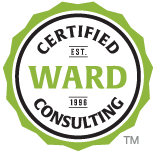Abstracts are for paintings, not presentations
When it comes to art, we willingly search for meaning in the abstract. When we attend a presentation, we want to learn something concrete that will make our lives better. Is your message a little fuzzy? As Bob Ross would say, let’s add some “happy little trees.”
Tip: Tell your audience about the value you’re giving upfront. What are their key takeaways?
The ability to make better decisions?
More peaceful sleep, knowing their data is more secure?
More money through strengthened customer relationships?
Does it pass the ‘so that’ test?
Instead of, “You’ll learn insights about client behaviors today.”
Try, “You’ll learn insights about client behaviors so that you can drive traffic to your website and increase revenue.”
Need help making your presentation a crystal-clear masterpiece? Email me for an honest critique.

